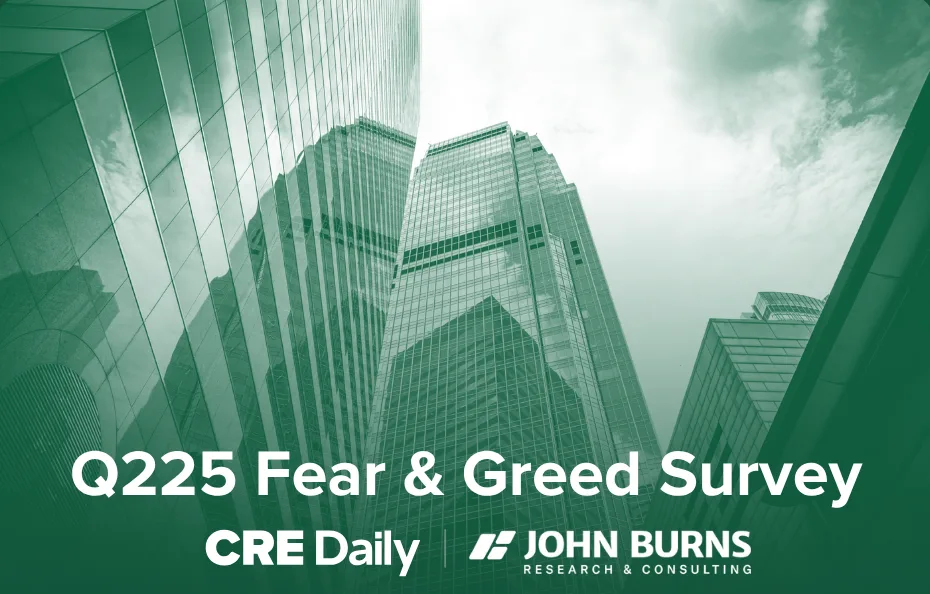The US Warehouse Boom is Deflating
The rapid expansion of warehouse construction in the U.S. is slowing down primarily because of rising interest rates and a decrease in demand.
Together with
Good morning. The rapid expansion of warehouse construction in the U.S. is slowing down, primarily due to rising interest rates and a decrease in demand. CBRE predicts a slowdown in economic growth for 2024, but a recession seems unlikely. Meanwhile, Morgan Stanley says, “the wall of maturities is finally upon us” and is actively hunting deals.
Today’s issue is brought to you by Viking Capital.
👋 First time reading? Sign up.
🎁 Want free merch? Share this.
Market Snapshot
|
|
||||
|
|
*Data as of 12/18/2023 market close.
END OF AN ERA
The US Warehouse Boom is Deflating
The recent surge in warehouse construction across the United States, largely fueled by the pandemic and the boom in e-commerce, has come to a halt.
Warehouse wars: During the last decade, warehouses emerged as highly sought-after assets among investors like Blackstone and Singapore's sovereign-wealth fund GIC. The pandemic further accelerated this trend, as developers rapidly expanded logistics facilities to capitalize on soaring rents and the robust demand from e-commerce giants like Amazon. This led to a widespread transformation of urban and suburban landscapes.
The slowdown: However, 2023 has witnessed a dramatic downturn. Industrial property construction starts plummeted by 48% in the first nine months compared to the same period in 2022, the steepest decline since 2009. Similarly, industrial real estate sales fell by 45% in Q3. High debt costs and slowing leasing demand are primarily to blame, with commercial mortgage rates doubling over the past year and land prices not decreasing sufficiently to offset these costs.

Adjusting to new challenges: Rising interest rates have led to a 16% decrease in industrial real estate values and higher vacancy rates. Leasing has slowed, particularly in e-commerce, reducing the viability of new developments. In Q3 2023, industrial lease signings reached a six-year low at 90.1 MSF. Despite shortages in New York City and South Florida, cities with more land, like Indianapolis, Denver, Austin, Dallas, and San Antonio, experienced overbuilding, leading to high vacancy rates of over 8%, significantly above the national average of 4.9%.
➥ THE TAKEAWAY
Not a crisis, but a rebalancing: Despite these short-term hurdles, the warehouse and industrial sector isn't facing a crisis. Construction levels remain high historically, vacancies are low, and mortgage defaults are rare. The sector could rebound if interest rates continue to fall. This slowdown represents not so much a collapse as a rebalancing, offering a more sustainable pace of growth in the future. The sector's long-term prospects remain positive, especially for high-quality assets, as e-commerce continues to expand.
A MESSAGE FROM VIKING CAPITAL
Build Financial Freedom with Passive Real Estate Investing
At Viking Capital, we're passionate about multifamily investing as a gateway to sustainable wealth and financial freedom. Our team of experts has consistently outperformed the market, preserving capital while maximizing growth.
💡 Now, dive into our world of possibilities with a FREE 7-Day Passive Investing Course! Discover the secrets behind our $800 million in AUM and 5,000+ unit acquisitions since 2015.
Ready to transform your financial future? Join our free course today.
Disclosure: Nothing in this message should be regarded as investment advice, either on behalf of a particular security or regarding an overall investment strategy, a recommendation, an offer to sell, or a solicitation of or an offer to buy any security. Advice from a securities professional is strongly advised, and we recommend that you consult with a financial advisor, attorney, accountant, and any other professional that can help you to understand and assess the risks associated with any real estate investment. The Sponsor’s Projections and Targets are not a predictor, projection, or guarantee of future performance. There can be no assurance that Projections or Targets will be met or that the Sponsor will successfully meet these Projections and Targets. Forward-looking statements, including Projections and Targets, are inherently subject to a variety of risks and uncertainties, and the actual results achieved may vary significantly and materially. All of the information in this message is sponsored content. CRE Daily has no affiliation or investment in the Sponsor’s company.
TRENDING HEADLINES
-
Winner: The FDIC awarded a 5% equity stake in $5.8B in Signature Bank loans to Related Fund Management, Community Preservation Corp., and Neighborhood Restore.
-
Apartment shakeup: Freddie Mac's Multifamily Apartment Investment Market Index (AIMI) fell to 107.1 in 3Q23, impacting all regional markets.
-
Remaking Macy's: Macy's (M) potential buyout hampers transformation plans, and analysts suggest going private may be the better option to focus on reforming retail operations.
-
From boardrooms to bedrooms: Manhattan’s Financial District has the highest percentage of upcoming commercial- to-residential conversion units in NYC.
-
Flexible future: Jesse Stein, Airbnb's (ABNB) global head of real estate, discusses the impact of return-to-office dynamics on the SF-based rental platform.
-
Keys surrendered: Emerald Equity’s founder may hand back the keys for defaulting on $110M in loans on Bronx buildings that are all facing pre-foreclosure.
-
Bouncing back: Falling mortgage rates are boosting builder confidence, signaling improving housing conditions heading into 2024, according to NAHB survey.
-
Rent rollercoaster: Slowing growth in apartment rents in major US markets raises questions about rental affordability and rent control.
-
Bank loan blues: Commercial mortgage origination volumes for bank-held CRE loans fell sharply in Q3 while delinquency rates increased.
-
Homesellers hold out: Low interest rates are enticing home buyers, but few homeowners are selling, resulting in low sales this year.
MARKET OUTLOOK
CBRE Sees “Early Stages of Recovery” in 2024
CBRE's 2024 U.S. Real Estate Outlook predicts a slowdown in economic growth, but a likely avoidance of a recession. This slowdown will lead to decreased real estate transaction values, offering potential buying opportunities.
Economic take: Despite high rates and potential recessions in Europe and China, resilient consumer spending is expected to counter headwinds. CBRE’s report forecasts a slight increase in the US unemployment rate to 4.5% and a reduction in inflation, allowing the Fed to lower short-term interest rates, which should positively impact all CRE sectors.
Investment thesis: CBRE expects property pricing to hit its lowest point in 1H24. Cap rates, which measure a property's cash flow as a percentage of its value, are projected to expand by 25–50 bps, resulting in a further 5–15% decline in values. Investment may decrease by 5% in 2024, following this year's expected 45% drop. All-cash buyers, such as sovereign wealth funds and pension funds, are likely to take advantage of generational buying opportunities.
Sector-specific insights:
-
Capital Markets: Property pricing will reach its lowest in early 2024, with capitalization rates expanding and values declining by 5-15%; investment volume to decrease by 5%, and limited commercial real estate lending expected.
-
Office and Occupier: U.S. office vacancy to hit a peak of 19.8% in 2024 with a modest revival in leasing activity, mainly for smaller office spaces, and the lowest construction level since 2014.
-
Retail: Retail availability rates to drop to 4.6% in 2024 due to limited new construction, with retail spending and demand for space decreasing and luxury retailers expanding in certain U.S. markets.
-
Industrial & Logistics: Stable activity expected in 2024 with similar net absorption to 2023, rental growth moderating, construction halving, and vacancy rates aligning with the five-year average mid-year.
-
Multifamily: Around 900,000 new units under construction for 2024, leading to increased vacancies and modest rent growth, with a significant drop in new construction starts and buying remaining costlier than renting.
-
Hotels: Slower economic growth to result in a 3% increase in revenue per available room in 2024, with urban and airport hotels performing well but resorts experiencing slower growth.
-
Data Centers: Continued strong demand leading to a 10-15% price increase in 2024, with construction activity in major markets exceeding 3,000 MW and certain markets becoming focal points for development.
➥ THE TAKEAWAY
Every investor for themselves: While 2024 presents challenges for the real estate market, including tighter lending and further declines in property values, it also brings opportunities. The market is poised for stabilization and early recovery signs, especially in the second half of the year. This creates a unique window for deals, particularly for cash-rich investors sitting on the sidelines.
AROUND THE WEB
📖 READ: The long-awaited opening of the Fontainebleau Las Vegas, a new iconic hotel and casino on the Strip with over 3,600 rooms, now stands as Nevada's tallest building.
🎧 LISTEN: The TreppWire Podcast discusses the Fed's decision to hold rates steady and their prediction of three rate cuts next year, along with their implications for the CRE market.
🖥️ WATCH: NAHB CEO Jim Tobin discuss the rise in homebuilder confidence on 'Varney & Co.' and whether the Fed’s recent ‘Christmas gift’ could lead to renewed home construction in 2024.
DISTRESSED DEALMAKING/h4>
Morgan Stanley Hunts for Rare Deals in CRE Market Turmoil

Morgan Stanley headquarters in New York. Photographer: Bing Guan/Bloomberg
As pain ripples across the global CRE market, Morgan Stanley (MS) is actively looking for real estate opportunities amidst distress.
Art of the deal: The firm's real estate investing platform, led by Lauren Hochfelder, is seeking deals on various property types, including apartments and industrial. The company is prepared to employ different investment strategies, such as providing traditional credit or preferred equity. With the wall of maturities finally upon us, Morgan Stanley is not waiting for the all-clear sign to dive in.
Deepening distress: In the face of soaring borrowing rates and plummeting values, CRE sales have come under pressure. However, as loans mature and owners struggle to refinance, opportunities to lend to property owners are emerging. Hochfelder sees this as one of the best opportunities they have ever seen, with deep distress in the toughest real estate assets and widespread dislocation across the board.
US and Japan in focus: Morgan Stanley has been most active in the US and Japan. The US CRE market tends to correct first and rebound the quickest, providing attractive opportunities. Sectors outside of office are showing the strongest fundamentals. In Japan, financing conditions, healthy inflation, and migration to city centers like Tokyo are also driving real estate investment opportunities.
Retail rebound: After years of turmoil in retail due to e-commerce growth, interesting opportunities may arise for the best retail properties. Investments in retail are expected to benefit from changing dynamics and a potential rebound in the sector. Morgan Stanley is keeping a close eye on opportunities and will capitalize as they arise.
➥ THE TAKEAWAY
Clarity on rates required: Morgan Stanley's real estate investing platform is actively seeking CRE opportunities before the approaching wall of maturities hits, with a focus on the US and Japan. Clarity on the Fed’s rate policy, along with distress and dislocation across various property types, offers attractive opportunities for deep-pocketed spenders. Additionally, rebounding retail and the divestment of holdings by companies contribute to the firm's optimism.
CHART OF THE DAY
In Q3 2023, commercial and multifamily mortgage debt grew by 0.8%, reaching $37.1 billion, with the total mortgage debt in this sector rising to $4.63 trillion, as reported by the Mortgage Bankers Association. Specifically, multifamily mortgage debt saw a 1.3% increase, totaling $2.05 trillion.
What did you think of today's newsletter? |





















